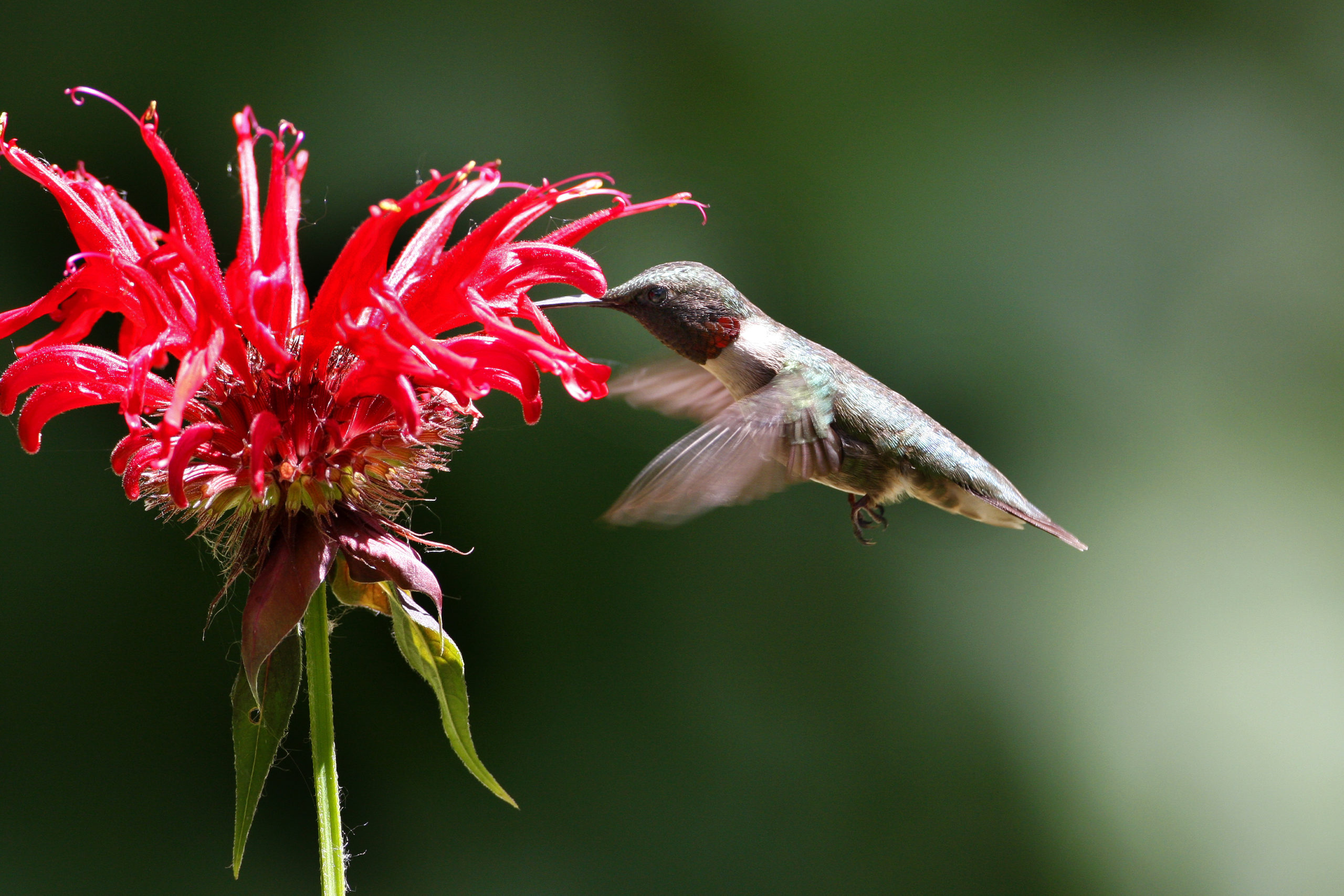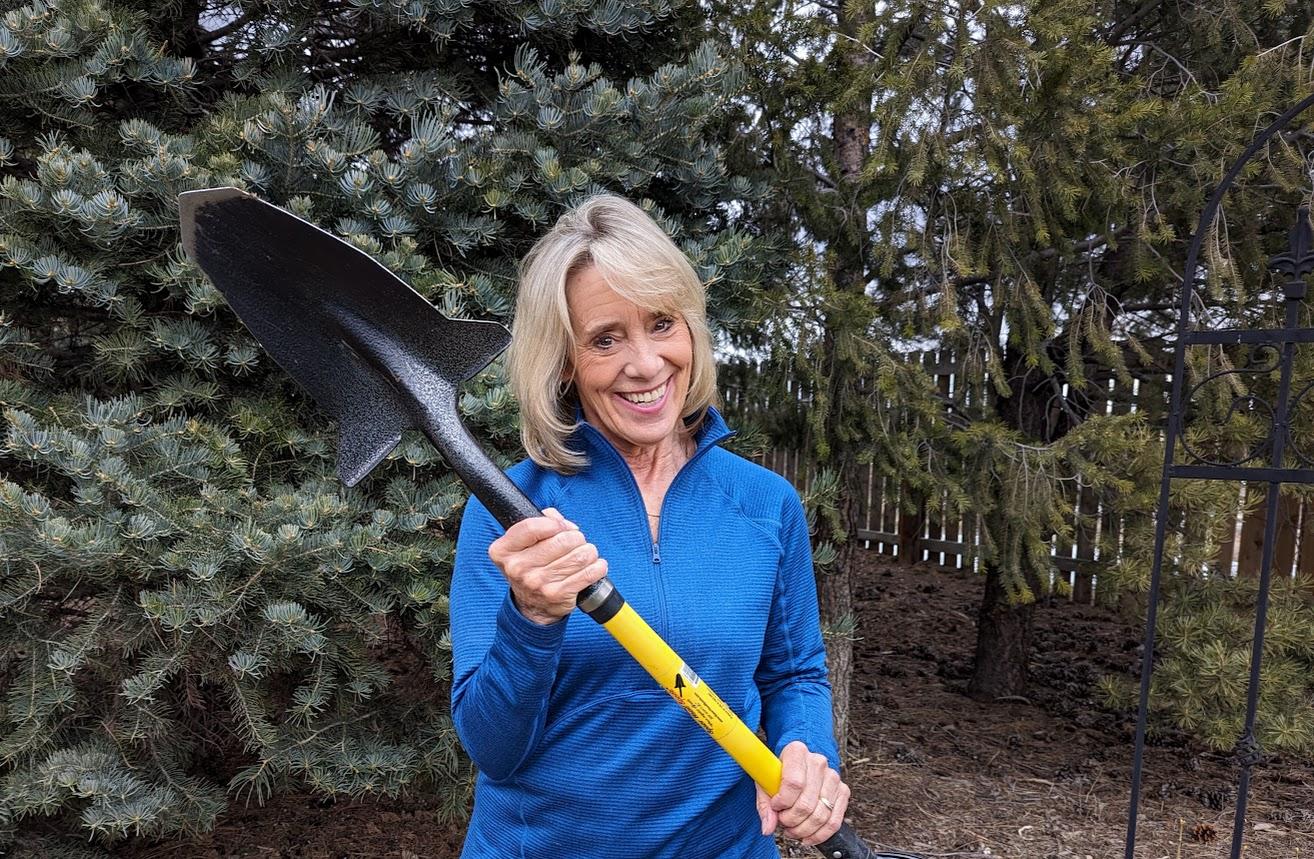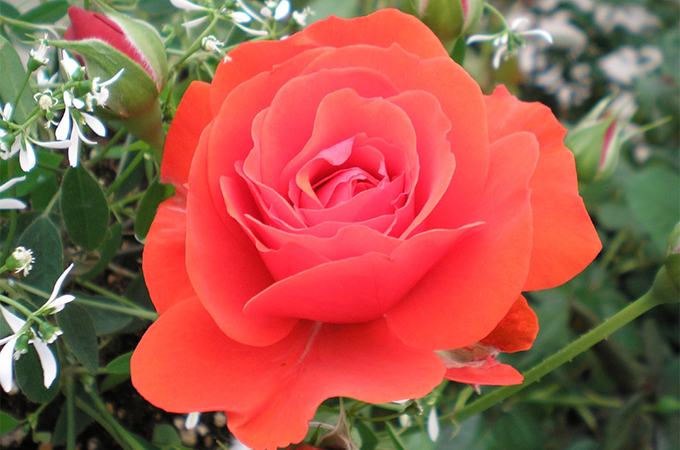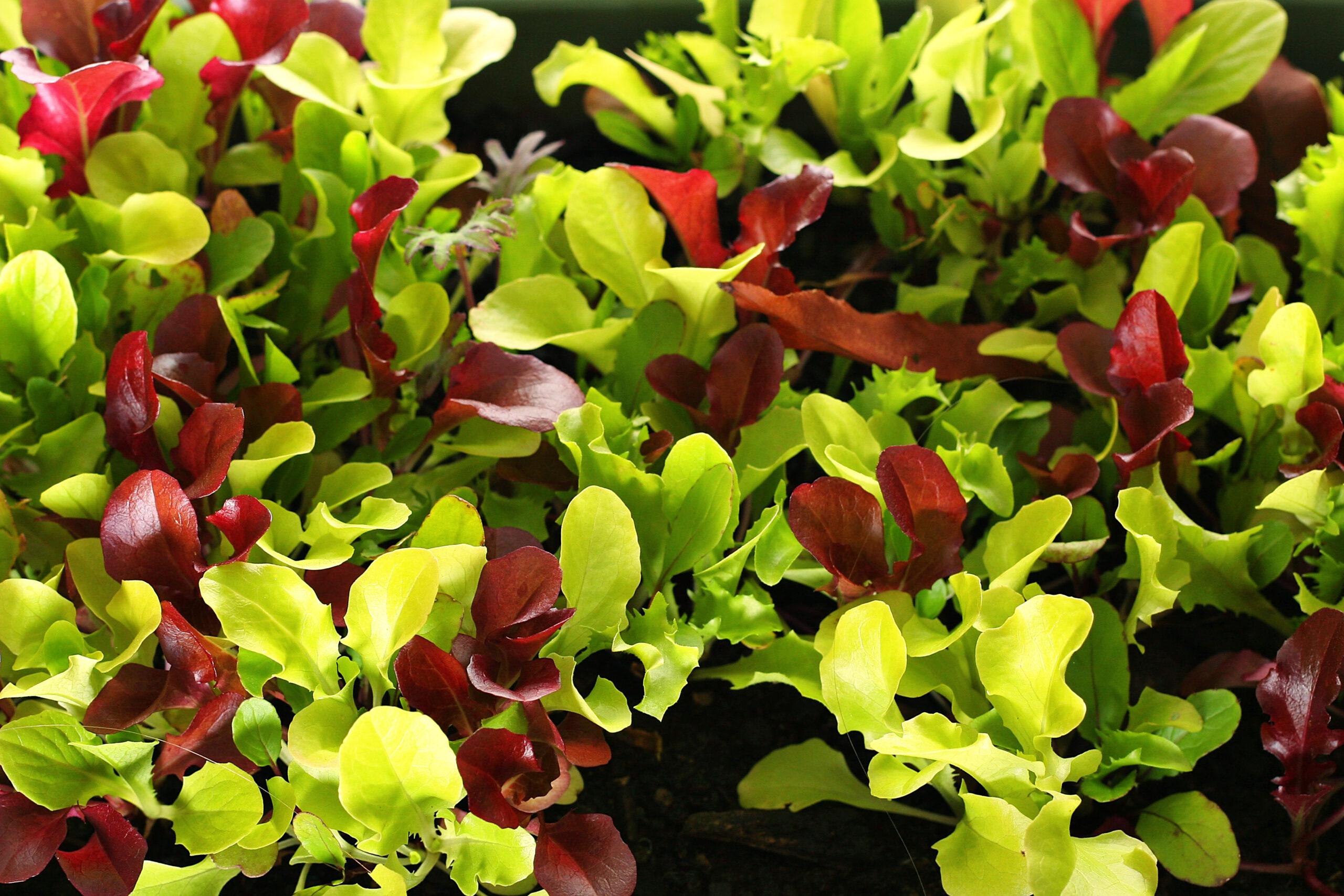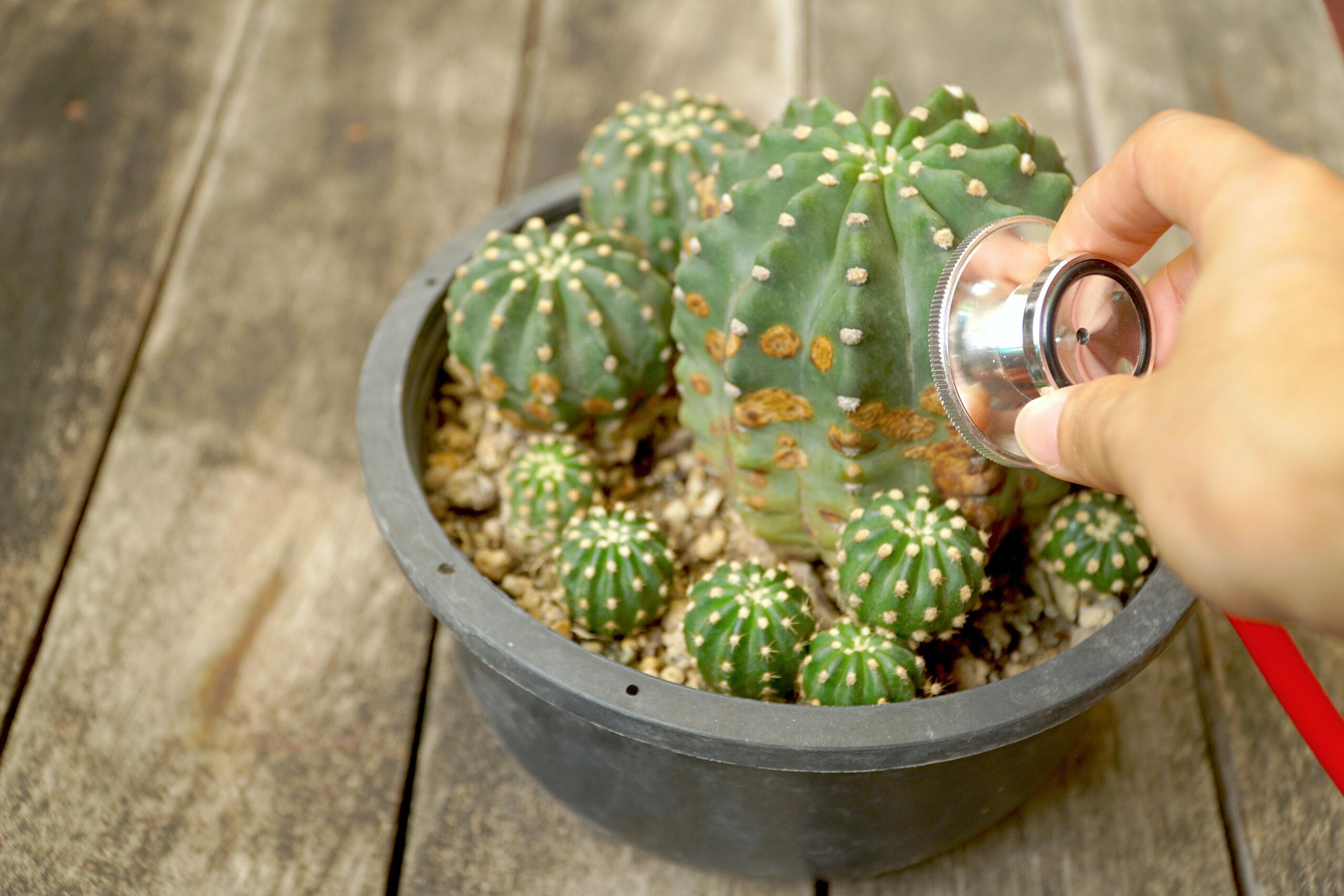Hummingbirds are amazing little animals! These “flying jewels” are always welcome visitors in our Front Range gardens. The “gee whiz” facts about these tiny creatures are impressive. They can fly at up to 70 miles an hour. They need to eat half of their body weight in insects and nectar every day. And they love to line their nests with the silken thread they “borrow” from spider webs.
But it’s the beauty and agility of these “flying jewels” that so easily capture our imagination. Why not plant flowers that make these tiniest of birds feel even more at home in your garden? Here are some options.
Redbirds in a Tree
Let’s start with a flower that inspires hummingbird wars in my backyard. My Redbirds are just getting ready to bloom, so the hummer air show to begin anytime now.
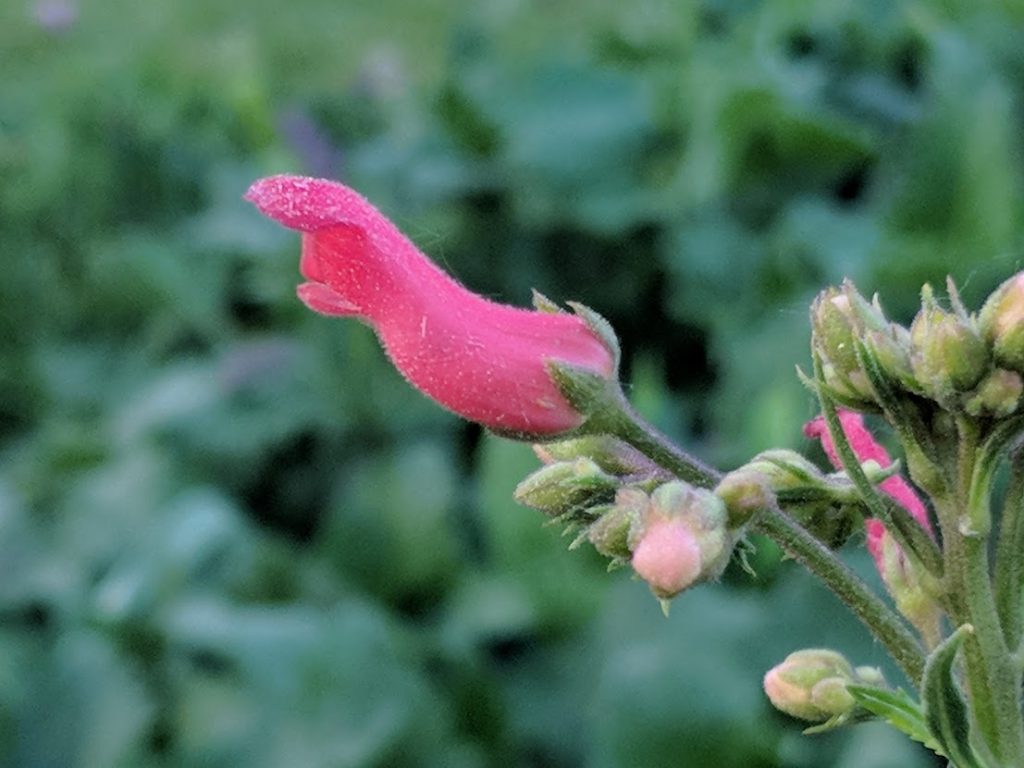
One close look at the tiny flowers of this unique perennial and you’ll see where the plant gets its name. The blossoms of Redbirds in a Tree are shaped like sweet little birds perched and patient, complete with beak and topknot.
Redbirds are part of the Plant Select program. It’s a cooperative effort by Colorado State University, Denver Botanic Garden and the “green industry,” the commercial garden industry. Tagawa Gardens is very active in Plant Select. The goal of the program is to research and suggest a variety of plants that are particularly well-suited to our general growing conditions. Redbirds excels at being “Colorado friendly.”
This penstemon relative produces a steady display of tiny tubular red flowers from early summer until frost. It tolerates moderate to dry conditions once it’s been in the ground for a couple of seasons. It’s a “must have” for gardeners who welcome the busy whirl of hummers this time of year.
Daylilies
Flowers don’t have to be red to attract hummingbirds. Tube- and trumpet-shaped blossoms draw them, too!
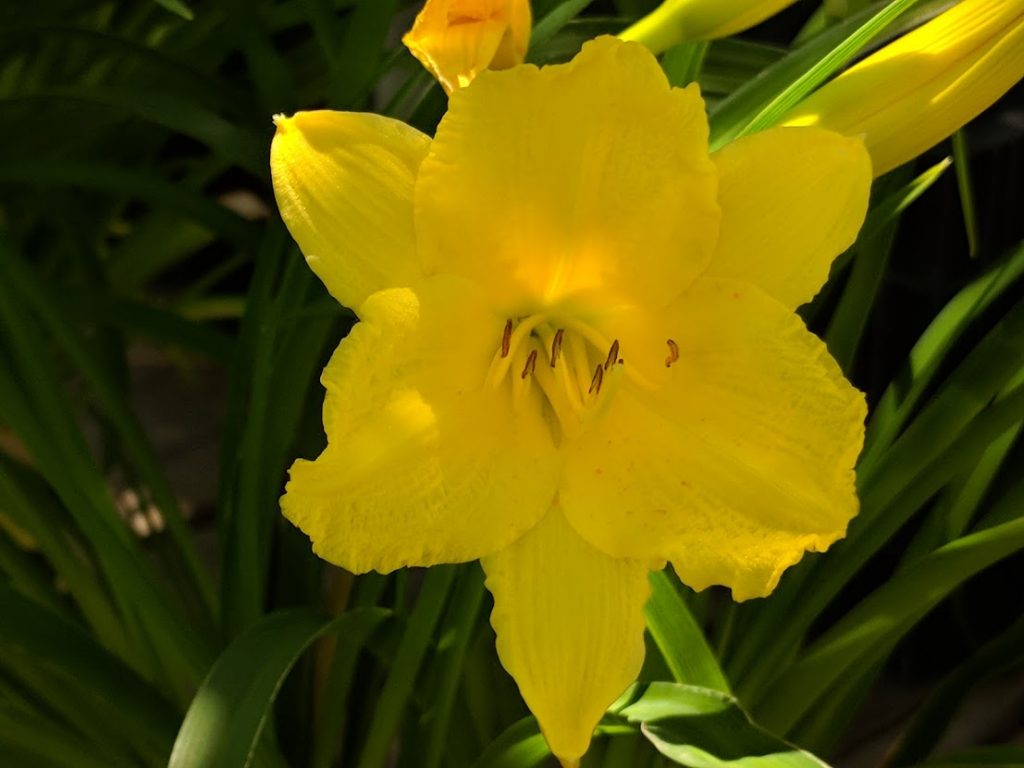
This “Stella de Oro” daylily is shorter than many other lilies but packs a big punch of color. Some of the larger bees will be visiting as well.
Daylilies are beautiful when planted in large clumps. They are drought-tolerant after a couple of seasons in the ground. They prefer full sun but will tolerate a bit of light shade. A deep watering once or twice a week will keep the blooms coming. All daylilies should be dead-headed to keep seed pods from forming which can significantly slow down repeat flowering.
Pincushion flowers
These sweet, almost puffy-looking little flowers actually resemble pincushions! Their “blossom” is actually dozens of tiny little tubes all bundled together. That’s the attraction for the hummers!
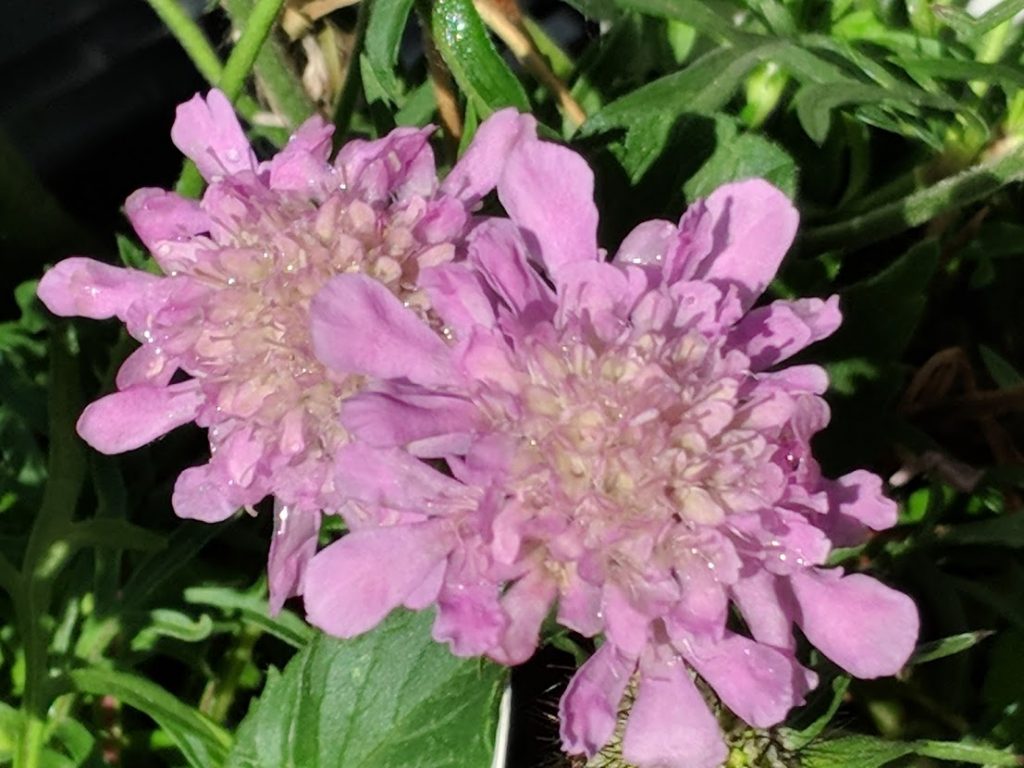
Pincushion flowers come in shades of pink or purplish-blue. Some varieties bloom early to mid-summer. Others will bloom into late summer.
As with daylilies, give pincushion flowers a deep watering once or twice a week and keep the fading flowers cut back to the nearest leaf cluster. They can be used as cut flowers, but I keep mine showing off in the garden where the hummers can find them!
Lupine
Talk about a show-stopper! For people, and hummingbirds, too! Lupine almost looks like it’s from another planet…. but in a very good way!

The hefty, tall flower spikes of lupins come in a variety of heights and colors. The pea-like blossoms put on their show in late spring and early summer, and make a great addition to a hummingbird garden.
Lupins prefer fairly consistent moisture. Deer and rabbits tend to leave them alone. Certain parts of lupins are toxic, which should be kept in mind when they’re planted within reach of particularly inquisitive pets and children.
Zinnias
Not all hummingbird plants are perennials. Zinnias are high on the hummingbird hit parade, too!
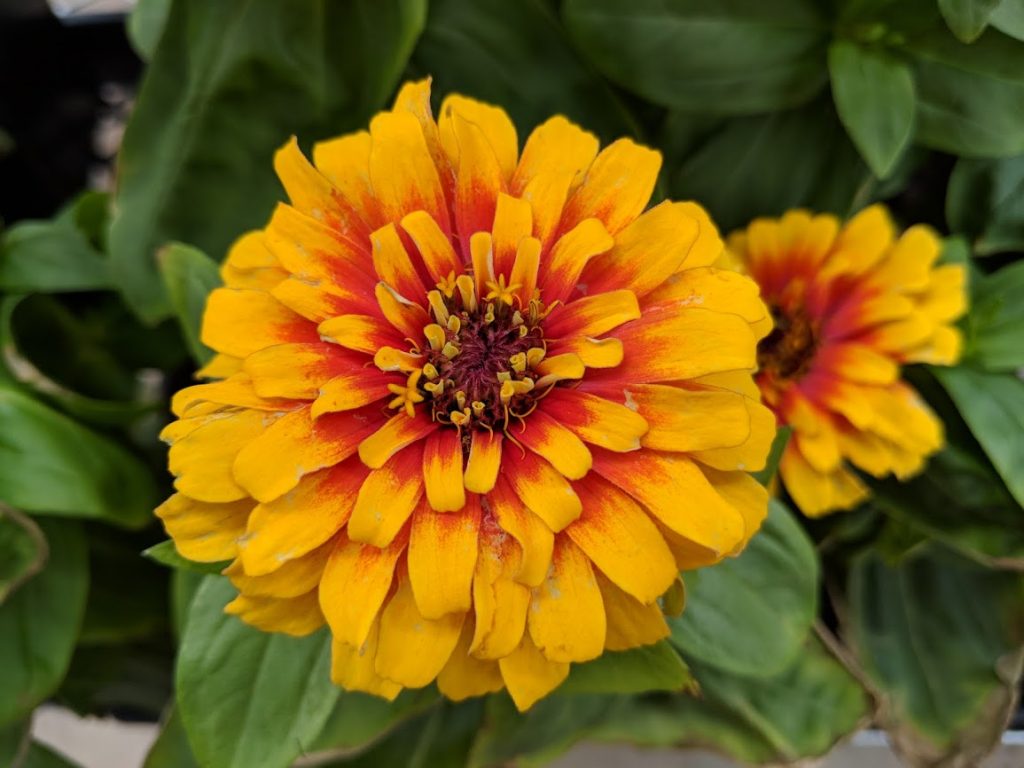
These heat-loving, hard-working annuals come in an amazing array of colors and growth habits….. short, medium and tall…. pinks, yellows, reds, oranges. Something for every taste!
Zinnias are long-lasting flowers that need full sun to thrive. They can be prone to mildew if their leaves don’t dry fairly quickly.
While they’re attractive to hummingbirds, they are not appealing to rabbits or deer. Go hummers!
Nicotiana
One look at these deeply tube-shaped flowers and it’s easy to see why they’re a hit with hummingbirds.
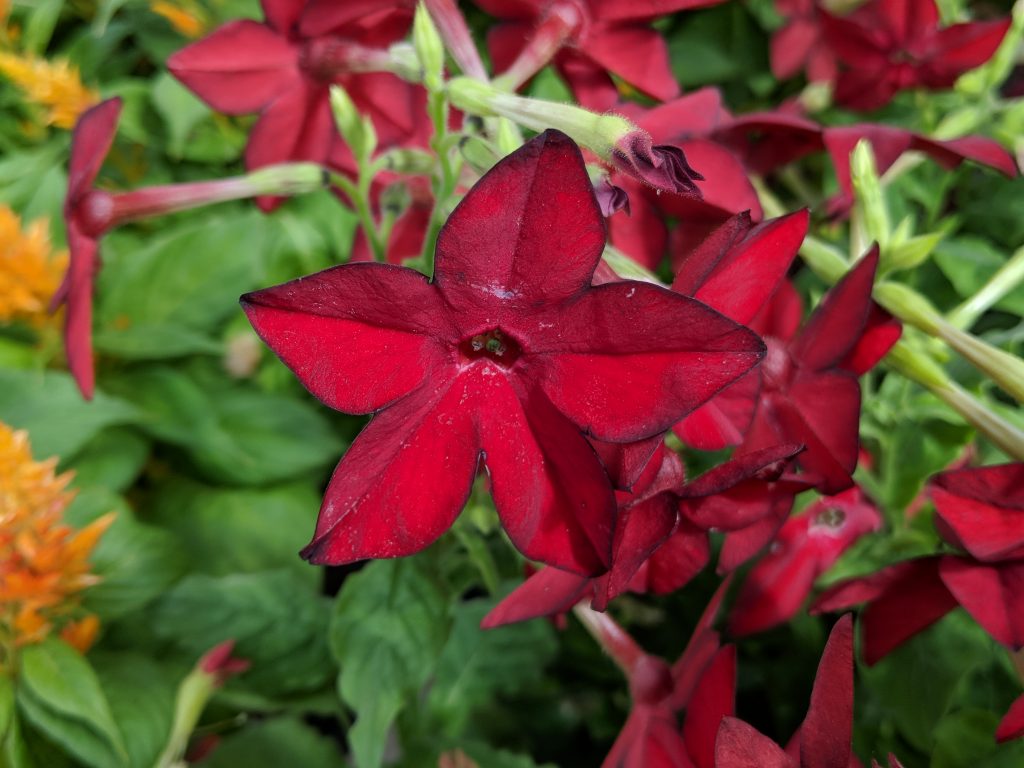
Flowers of the shorter varieties of nicotiana can be red, rose or purple. Taller strains have huge white blossoms.
Nicotiana prefers evenly moist soil and full sun but will tolerate some light shade. It blooms from early summer until frost.
All of the varieties are extremely fragrant. Just ask the hummers!
For more ideas about creating your own hummingbird garden, visit the Perennials or Annuals Departments at Tagawa Gardens. Feel free to bring pictures of your yard to help our plant staff create your own purr-fect hummingbird oasis for these beautiful birds!
